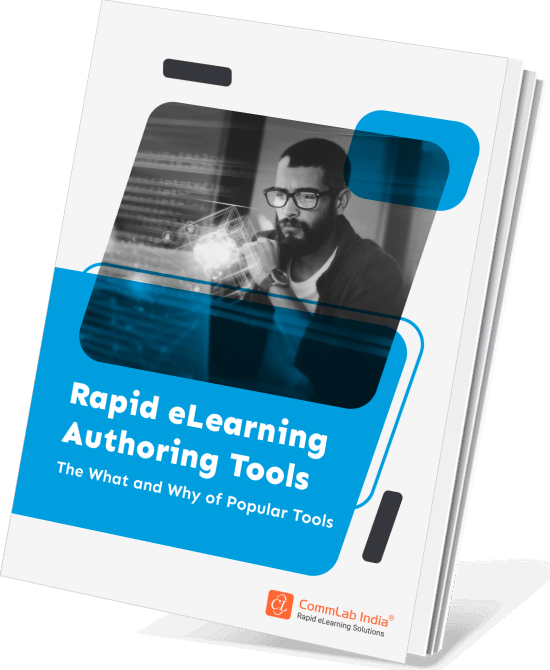Section 508 and WCAG: Why Should a Learning Designer Care

Do you know:
- What are Section 508 and Web Content Accessibility Guidelines (WCAG)?
- How to make e-learning courses accessible to all as mandated by the law?
What are Section 508 and Web Content Accessibility Guidelines (WCAG)?
Well, Section 508 and WCAG establish a set of rules that when followed, ensure your e-learning content is accessible to even learners with disabilities such as blindness, low vision, speech and hearing impairments, learning disability, limited movement, and photosensitivity. And therefore, if you want to make your eLearning accessible to people with disabilities, you need to ensure your courses meet the technical standards outlined in WCAG and Section 508.
→ Download eBook Now: Rapid eLearning Authoring Tools
How to make e-learning courses accessible to all as mandated by the law?
Let us now have a look at some of the major points you need to focus on while developing an accessible eLearning course.
Accessible eLearning: Key Points to Focus On
1. Descriptive Alt Text
Providing a text alternative that describes media such as images or animations is important to help visually impaired learners understand what’s happening onscreen. The primary way to make media accessible is by creating ALT tags for images and text transcripts for audio. We need to provide descriptive text for all images.
All you have to do is add the descriptive alt text in the place of the objects that will be read by the screen reader to covey the information. It is better not to use any punctuation in the alt text.
2. Objects Order
This is again an important point to focus. The objects should be aligned from “left to right” and “top to bottom”. This is also the order in which objects will receive focus when the learner presses the Tab on the keyboard. This is called Tab Order and it applies to learners with compromised vision and/or mobility. It is better to divert focus from decorative graphics as they are not important to understand the content.

Rapid eLearning Authoring Tools
Explore the What and the Why of Popular Rapid eLearning Development Tools, and GenAI Tools
- Categories of eLearning Authoring Tools
- Considerations to Choose Your Next Authoring Tool
- Features of Popular Rapid Authoring Tools
- GenAI Tools to Create Content, Graphics, Audio, and Video
3. Color Contrast Analyzers
This is a helpful tool for checking and calculating foreground and background color combinations. It helps define the legibility of the content and the contrast of visuals on the screen. Text and images have a minimum ratio of 4.5:1.
Contrast ratio helps determine whether people with color blindness and visual impairments can discern the contrast between 2 colors. Thus, it is easy to identify the pass/fail color criteria.
4. Keyboard Accessible
Another important thing is to ensure keyboard access. This means all the basic objects, elements, and activities onscreen are accessible using the keyboard.
It is recommended to avoid using drag-and-drop activity or mouse hovers because such activities create problems for visually impaired learners.
There are a number of authoring tools in the market to develop eLearning courses. But some of the best tools for developing accessible eLearning courses are Articulate Storyline, Adobe Captivate, and Lectora Inspire. All 3 tools fully support this functionality. They have all features to publish the course as per section 508 and WCAG 2.0 guidelines.

5. Screen Readers
Once you develop the courses, end-users need some tools or apps to use them; for example, a visually impaired person needs some technology to hear the course. Many screens readers can be used for accessible eLearning courses including:
- JAWS (Job Access With Speech)
- Zoom Text
- Window-Eyes
- NVDA
Hope now you are familiar with the subject and know the things designers should take care of when developing accessible eLearning courses.
Hope you find this blog informative! Do share your views.





